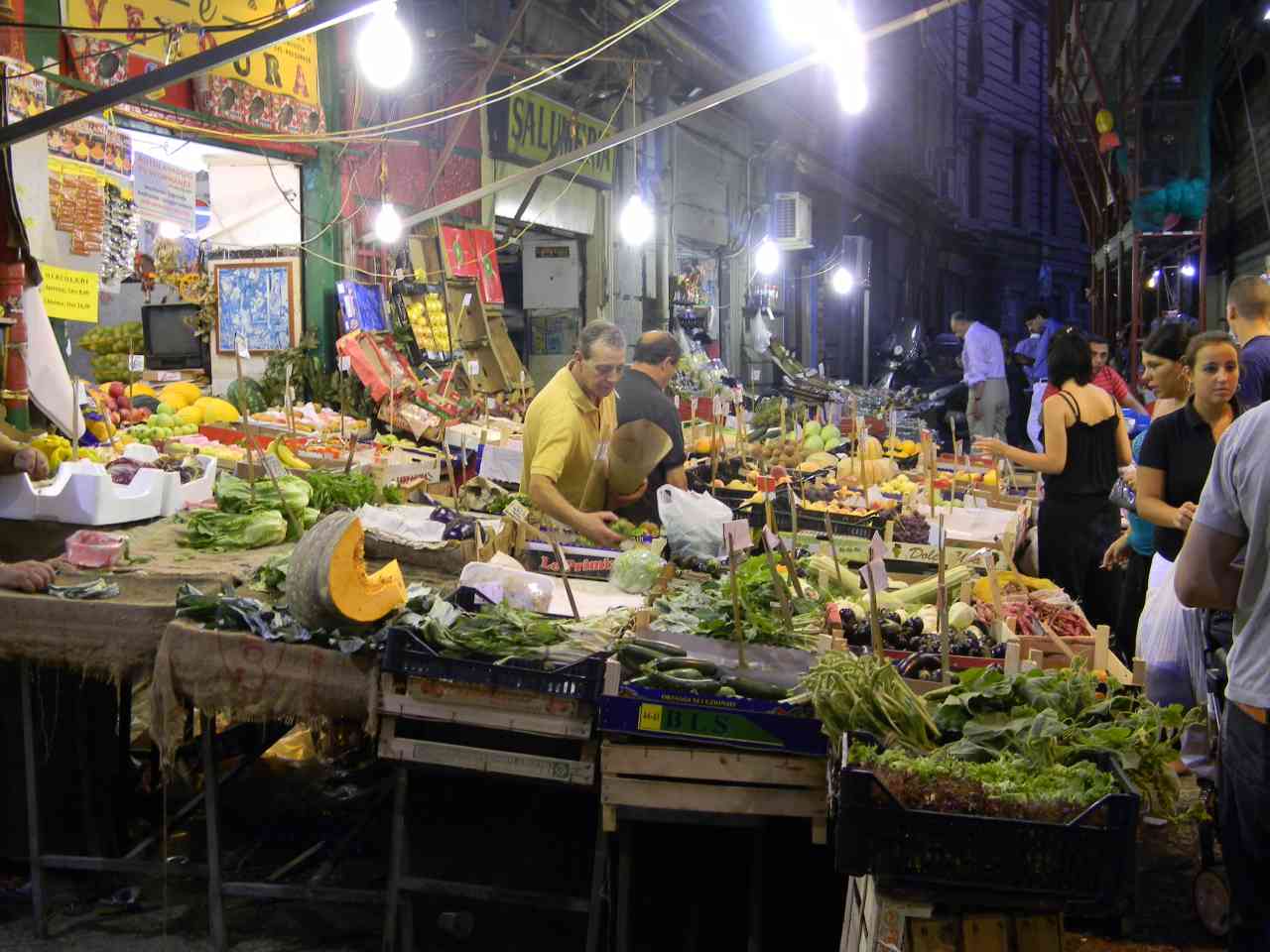In this article today, we want to tell you about Borgo Vecchio in Palermo so that, during a vacation in Palermo, you know exactly what to see and what its history is. Walking along the streets of some neighborhoods in the beautiful capital city of Sicily, you get the feeling of being in one of the souks of any Muslim city.
In this way, there are some markets that were built during the Arab domination, and even today, you can clearly notice the appearance, the customs of selling and buying, but also the colors, the smells, the habit of filling streets and squares with colorful stalls and tents. The markets of Palermo represent the ideal place for an authentic dive into the past and traditions of the people of Palermo.
The historic markets of the city of Palermo are true living monuments, and you definitely can’t visit this splendid city without admiring the spectacular and picturesque markets. They are almost a synthesis of the colorful nature and, above all, the multifaceted and cosmopolitan culture typical of the Palermo area.
However, as you delve into the heart of these markets, you are constantly accompanied by typical loud calls, often also colorful, from the various vendors who use this method to invite people to buy their goods.
This picturesque invitation is called “abbanniata” in the Palermo dialect. In fact, a good part of the spectacle is also listening to the typical “folk music” of the historic markets where you can buy a little bit of everything, but above all, fruits, vegetables, meat, and even fish. Just think that every respectable Palermo citizen knows perfectly which market to choose based on what they need to buy, and the most important markets are: Ballar˛, La Vucciria, Il Capo, Borgo Vecchio.
What to know about Borgo Vecchio in Palermo?
The neighborhood of Borgo Vecchio develops precisely in the northern area of ??the city, right next to the Politeama and extends to the port. The food market occupies an area that particularly affects the streets ScinÓ, Principe di Scordia, Ximenes, and also the little square NascŔ.
Inside, there are also commercial activities and artisanal companies, such as wood and iron workers, while on the outskirts of Piazzetta NascŔ, there are multiple mechanical workshops. The formation of the neighborhood dates back to the year 1556, following the construction of the new port, and later became the residential area of ??fishermen and sailors.
Originally, Borgo Vecchio extended in the area between the Porta S. Giorgio and the church S. Lucia. It is also worth mentioning that the exponential growth of the neighborhood was due to the immigration of artisans and merchants who, from other Italian areas, came to settle in Borgo, driven by the promises of development that had been made to the citizens of Palermo.
In recent years, however, as is already the case with other historic markets in the city, we know that Borgo Vecchio has been subject to urban gentrification, seeing the growth of youth and tourist presence in the evening hours, particularly attracted by the many pubs as well as hotels and B&Bs.







